DEAR FRIENDS. IF YOU LIKE THIS TYPE OF CONTENT, SUPPORT SOUTHFRONT WORK:
PayPal: southfront@internet.ru
Donation alerts: https://donationalerts.com/r/southfront
Gumroad: https://gumroad.com/southfront
Or via: http://southfront.org/donate/ or via: https://www.patreon.com/southfront,
BTC: 3Gbs4rjcVUtQd8p3CiFUCxPLZwRqurezRZ,
BCH ABC: qpf2cphc5dkuclkqur7lhj2yuqq9pk3hmukle77vhq,
ETH: 0x9f4cda013e354b8fc285bf4b9a60460cee7f7ea9
The experience of local wars and armed conflicts of the late 20th and early 21st century shows that the fighting acquires increasingly the characteristics of guerrilla warfare, where most of the combat is either a raid, ambush, bombing of checkpoints and/or sabotage. The armed forces of the USSR and its inheritor, the Russian Federation, as well as the USA, have faced this problem more than anyone else. Both countries have vast experience in the use of sniper rifles, as well as some of the premier sniper schools for the development of sniper weapon systems and the training of specialists for sniper work.
Modern sniper rifles can be divided into three main categories, depending on the intended task and the range required to successfully engage the target.
The first class includes weapons designed for sniper work at distances of up to 200 metres. These, as a rule, are sound suppressed rifles (or guns with scopes and PBS) of smaller calibre, including .22 calibre Long Rifle, 5.56×45 NATO, 5.43×39, and 9×39 (SP-5, SP-6, PAB-9). Weapons of this class are mainly used for operations in an urban environment (including use by police, such as SWAT units), for the elimination of sentries, silent destruction of the enemy soldiers, interfering in the implementation of basic operational tasks, and in various special operations missions both of a military and law enforcement nature. These types of rifles will not be the focus of this article.
The second class of sniper rifles encompasses the bulk of military sniper rifles with standard calibers of 7.62×51 NATO, 7.62×54, and .300 Winchester Magnum. Such weapons are focused on performing all major types of combat sniper work at distances from 300 to 800 metres.
Finally, the third class includes long-range rifles chambered for powerful ammunition types such as .50 BMG (12.7×90), 12.7×108 (arr. 1930/38.), .338 Lapua Magnum (8.58×71) and a few others. These systems are, in fact, a new class of military weapons, which have appeared relatively recently. They are designed not only for the liquidation of human targets at distances of up to 2000 metres, but also to fire at embrasures, eliminate targets through hard cover, to disable light-armoured objects including vehicles, and in counter-sniper operations.
Main Sniper Rifles of the U.S.
American M110. The M110 Semi-Automatic Sniper System (SASS) is a semi-automatic sniper rifle based on the AR family of rifles. It was developed and manufactured by Knight’s Armament Company to replace the M24, which showed its inadequacy in meeting many of the battlefield requirements encountered in the wars in Afghanistan and Iraq. The M110 marries the 7.62×51 (.308) calibre round and a 20 inch barrel in the same basic small arms platform as the ubiquitous M4 carbine, and largely functions in exactly the same way. The special features of this sniper platform include: a trigger mechanism with a two stage trigger, which improves the shooting accuracy with a predictable time of the shot, an adjustable-length butt stock (in later models), two additional swivels on the butt stock, and a channel in the charging handle for the removal of the residual powder gases away from the shooter’s face when using the monolithic type of muffler bracket for the scope mount. During operations in the military actions in Afghanistan and Iraq, claims were made by the US military about the low reliability and insufficient accuracy of the rifle, and also the fragility of its components. In 2016, information appeared alluding to the fact that this sniper rifle will probably be replaced by the G28 rifle from the Heckler & Koch company. It was adopted by the US army in 2008 and is the main weapon of snipers and marksmen in U.S. Army infantry units of 7.62x51mm calibre. The claimed accuracy is of no more than 1.3 MOA (accuracy of 1 MOA is equivalent to 2.9cm at a distance of 100 metres) when using ammunition of match-grade (the highest quality cartridges).
The rifle was basically developed as a stop-gap to provide light infantry squads with a weapon with improved range and the power to eliminate a human target with one round. Although it weighs in at approximately 7 kgs. (15 lbs.) loaded (with scope and suppressor fitted), the rifle’s length can be reduced to only 40.5 inches when the stock is all the way retracted (46.5 inches when suppressor is fitted). Ironically, the M110 seems to remedy many of the shortcomings of the M4 carbine by giving the infantry squad a weapon more along the lines of the traditional battle rifle: a barrel length of 20 or more inches, a high calibre rifle round, and an overall length and loaded weight closer to that of the M1 or M14.
American M24 (M24A2/M24A3). A military and police version of the Remington Model 700 rifle, produced by Remington Arms. The M24 is the main sniper rifle used by designated marksmen of the US Army. In the middle of the 1980s, M21 semi-automatic sniper rifles, based on the M14 rifle, started becoming inoperable, because of an acute lack of spare parts. Furthermore, the changed geopolitical situation at this time had shifted the center of US military operations from Europe to the Middle East. Fighting in an open desert environment demanded a precision rifle able successfully engage targets at distances of up to 1000 meters. The Remington 700 won the tender in competition with the Austrian Steyr SSG69. The M24 is a bolt-action rifle. The butt plate is regulated – up to 69 mm – for its operator. The Leupold Ultra M3A 10×42mm fixed-power scope has the magnification of 10x or 12x, an elongated-shaped mil-dot wire reticle and a compensator to check the reduction of the trajectory of the bullet. The M24 utilizes М118SB rounds. The sighting equipment is also designed for the М118SB. The usage of other 7.62×51 mm caliber NATO rounds demands further sighting calibration. The claimed accuracy with match-grade ammunition is up to 1 MOA.
A further development of the M24, the M24A3 is chambered to fire the .338 Lapua Magnum (8.58x70mm.) round. The M24A3 has a five round detachable box magazine as opposed to the original internal five round magazine, and is fitted with a Leupold Mk 4 M1LR/T variable power scope. The .338 Lapua round provides greater range out to between 1,000 and 1,500 meters.
American Barrett M82/M107. Barrett Firearms Manufacturing produces this weapon. The automation of this rifle is based on the rotary shutter. The rifle belongs to the class of “anti-material” rifles, but is often used as a weapon against enemy infantry entrenched in buildings or in shelters. The rifle is equipped with folding iron sights and a Picatinny rail mount for an optical scope. On the lower side of the receiver there are special attachments for mounting the rifle on infantry machine gun tripods of type M3 or M122, as well as with the help of special shock-absorbing cradles, the rifle can be installed on vehicles (jeeps and armoured personnel carriers). Transportation of rifles is done in special soft or hard cases.
The last serial modification is the M82A1M, adopted by the US Army under the designation M82A3. It differs from the M82A1 in the installation of an elongated Picatinny rail for mounting optical scopes and other accessories, a removable carrying handle and foldable rear support under the butt. The M82 rifle was first used in the fighting during the “Desert Storm” operation in 1991, and fared well in the fighting in Afghanistan and Iraq in the years that followed.
The M82 was designed to allow a single shooter to make accurate, long distance shots with the .50 BMG (12.7x99mm NATO) round. This round has been used in the M2 Browning heavy machine gun in all of its variants since the early 1930s, and was originally designed to achieve greater armor piercing capability. The M82 makes it possible for a shooter to accurately fire the .50 BMG through a system of recoil reducing elements. The M82 utilizes a short recoil buffering system, with the barrel recoiling back against recoil buffer springs with remaining recoil force absorbed by the bolt assembly. The large muzzle break and significant mass of the rifle also help dissipate recoil.
It is currently the main large-calibre sniper rifle used by the U.S. Armed Forces under the index number M107/M107A1. The last modification of the M107, the M107A1, is most notably 5 pounds lighter than its predecessor. This significant weight loss is due to the use of titanium in its construction. The M107 makes use of a cylindrically shaped, titanium muzzle brake and a refined barrel key and recoil buffer, also constructed of titanium. Accuracy achieved is 1.5 to 2 MOA when using match class ammunition. Maximum effective range is considered to be in the area of 1,800 to 2,000 meters; however, a skilled long distance shooter can achieve accurate shots far exceeding this range.
American Mk 14 Enhanced Battle Rifle (EBR). In the 1980s and 1990s the US military’s use of the Vietnam War era M14 self-loading rifles was very limited; however, once the US got involved in active military campaigns in Iraq and Afghanistan, the troops required a more powerful and long-range weapon than the M16A2 rifles and M4 carbines chambered for the 5.56×45 NATO round. The simplest solution was the return to the ranks of the M14 rifle. The Special Operations Forces Command of the US, operating under the auspices of the Navy, created on the basis of conventional M14, a new “improved combat rifle”, the Mk14 EBR (Enhanced Battle Rifle). This version of the M14 has a reduced barrel length (460mm instead of 560mm), a more effective flash suppressor, a new channel, a telescopic adjustable butt stock, a pistol grip and a Picatinny rail. It is used by several special units, including the SEALs and Delta Force.
The Mk 14 Enhanced Battle Rifle was developed in a number of different variants, and tailored for the specific military branch intending to use it. Different variants were developed for the U.S. Army, Navy Special Warfare, U.S. Airforce, U.S. Marine Corps, and even the U.S. Coast Guard. Unlike the M4 carbine, the Mk14 EBR has a three position select fire trigger mechanism, allowing for both semi-auto and full auto fire. Thusly, the firearm can not only act as a sniper rifle in a competent marksman’s hands, but also as a squad support weapon in view of its high rate of fire of 725 rounds per minute. Due to its lack of a heavy barrel and low magazine capacity of 20 rounds, a high rate of fire cannot be maintained for extended periods of time; however, the weapon provides added power, range and volume of fire to a squad or special operations team.
American M2010. It is developed by Program Executive Office Soldier (PEO Soldier) and produced by Remington Arms for the US Army to replace the M24 rifles, taking into consideration the experience obtained in the course of hostilities in Afghanistan. The M2010 sniper rifle is a bolt-action rifle with rotating bolt with two lugs at the front. The main differences between the M2010 and the M24 sniper rifle are: use of the .300 Winchester Magnum cartridges (7.62x67mm) instead of the standard NATO cartridge (7.62x51mm), a detachable box magazine holding 5 rounds is standard, the rifle stock and hand guard are made of aluminum alloy, the stock is fully adjustable and foldable for storage and transport, and the rifle benefits from the application of modern anticorrosive coatings. There is a long Picatinny rail located on top of the rifle. The claimed accuracy is of no more than 1 MOA when using the regular production .300 Winchester Magnum cartridges.
The M2010 was put into use by U.S. Army soldiers deployed to Afghanistan in 2011. The soldiers tasked with using the firearm in combat gave the rifle positive reviews, and the performance of the new weapon was also impressive. The Army decided to adopt the M2010 into the service in greater numbers, replacing the older M24 entirely, and fielding over 2,600 of the newer rifles with Brigade Combat Teams and specialised sniper units.
American CheyTac M200 Intervention. Designed and manufactured by CheyTac LLC, it is considered a LRRS (Long Range Rifle System) sniper weapon. The main objective behind the M200 was to create a weapon superior to the 12.7mm calibre rifle in accuracy at extreme long ranges (exceeding 2,000 yards) to defeat enemy personnel. It uses special sniper ammunition developed by the manufacturer; the .408 CheyTac and .375 CheyTac. At ranges of over 700 metres, the energy of the .408 bullet calibre is higher than the energy of the 12.7x99mm bullet calibre, despite the fact that the .408 cartridge is 30% lighter and creates less recoil. It features a longitudinally sliding, rotating bolt. For transportation and storage, the trunk is removed and the sliding butt moves forward until it stops. An effective muzzle brake, or silencer, can be mounted via a threaded barrel. A standard Picatinny rail is used for the installation of optics. If necessary, an optical scope can be supplemented by a night vision and infrared laser for illumination purposes.
It is currently in service with the US Marine Corps and a number of other NATO countries. The claimed accuracy is 1 MOA at a distance of up to 2200m, when used with a standard cartridge. The CheyTac M200 Intervention currently holds world record for the closest shot grouping at distance, with all three shots falling within 16.625 inches (42.23 cm.) at a range of 2,321 yards (2,122 meters).
Main Sniper Rifles of the Russian Federation
Russian SVD. The SVD rifle is produced in the Izhevsk machine-building plant. It is the main 7.62x54mm calibre weapon of the army snipers of the Russian Federation Armed Forces. With some modifications, it has been in production since 1963, and to this day, is unsurpassed in its simplicity and reliability. It is a gas operated, semi-automatic weapon, with a short motion not connected rigidly to the bolt carrier gas piston (to reduce the weight of the automation moving parts). The rifles bolt has 3 locking lugs at the head of the bolt instead of the 2 lugs of other Kalashnikov rifles, providing greater strength. The muzzle of the barrel has an attached flash suppressor with five longitudinal grooves, masking the shot and protecting the barrel from contamination. The cut-out in the butt and the front face form a pistol grip. The centre of gravity of the charged rifle is almost exactly at the centre of the magazine. In addition, it has good ergonomic features ensuring that the gun feels well balanced when brought to a firing position. The scope is mounted on a bracket attached to the left side of the upper receiver. In addition to the standard optical scope, a fixed magnification of 4x no-spark night scope can be installed. It is currently available in a number of variants, including the “classic” Dragunov SVD rifle with modern plastic stock and a shortened version of SIDS. The SVDS rifle was developed featuring a shorter barrel, folding buttstock and a number of improvements to the strength and durability of the design. A further modification is the Dragunov SVDM sniper rifle. It has improved ergonomics and the ability to install modern scopes on a Picatinny rail and can be equipped with a suppressor. The original SVD rifle has a wooden stock and handguards, while newer variants make use of synthetic materials. The rifle has an accuracy of 2 MOA when using standard cartridges, and an effective range of 800 meters (875 yards).
Russian T-5000. It is a high-precision, bolt-action sniper rifle with a longitudinal sliding gate. It is produced by the ORSIS arms factory by the industrial group “Survey Systems”. The rifle was introduced in 2011 at the International Russian Arms Exhibition in Nizhny Tagil. The T-5000 has a bolt that is made of stainless steel, and that is heat treated during manufacture to ensure the bolt’s strength. It has a pivoting, longitudinal sliding bolt. The barrel and trigger mechanism are also made of stainless steel. The T-5000 uses the barrel of the ORSIS SE, which is precision machined through single-pass cutting. The accuracy of the barrel manufacturing is of the order of 0.002mm. The barrel can withstand 5,000 firings without any compromising of accuracy. The T-5000 is chambered in the powerful .338 Lapua Magnum round, which produces around 5,000 ft.-lbs. of energy. Alternate chambering includes the 7.62x51mm NATO and .300 Winchester Magnum. Ammunition is fed through a detachable box magazine, in both 5 and ten round capacities.
The performance characteristics of the ORSIS T-5000 rifle allow striking targets at any time of the day or night, in all weather conditions, without pre-zeroing or technical training for a distance of up to 1,650 metres. ORSIS rifles have consistently demonstrated firing accuracy at a level not greater than 0.5 MOA. The sniper complex “Accuracy”, constructed on the basis of this rifle, was adopted by the FSB, the FSO and the National Guard of Russia in September 2017.
Russian ASVK/KSVK. Designed and produced by the V.A. Degtyarev plant located in Kovrov, Russia. Classified as an anti-material rifle, it is designed to engage manpower, unarmoured and light-armoured vehicles. It has a longitudinal sliding, pivoting bolt. The rifle is a bull-pup design, with the bolt located to the rear of the trigger group. Such a configuration reduced the overall length of the weapon to only 1420mm, while maintaining a significant barrel length of 1000mm. The magazine is equipped with a plastic cover, allowing it to be used as an additional bearing for the shooter’s left hand. The rifle is equipped with a mechanical sighting device mounted on the aiming bar, which can also be used as a handle for carrying the rifle. With the installation of optical sights this aiming bracket leans to the right. It is in service with the Armed Forces and the Interior Ministry of the Russian Federation. It is the standard equipment of the sniper complex 6S8, part of the Russian military equipment of the “Ratnik” soldier. The accuracy is approximately 1.5 to 2 MOA when using standard cartridges.
Russian SV-98. Produced by the Izhmash concern, the SV-98 is designed to defeat emerging, moving, open and unmasked, human targets at ranges of up to 1000m. The SV-98 rifle is built on the proven sporting rifle design of the Record-CISM, and features a longitudinal sliding rotary bolt locked on 3 lugs. The rifle has a wooden stock with an adjustable butt-plate and integral and adjustable cheek-rest. An integral, folding bi-pod is fitted to the forward end of the stock. The SV-98 rifle is in service and used by the Armed Forces of the Russian Federation, the FSB, the FSO and the Ministry of Internal Affairs. The accuracy is about 0.6-0.7 MOA when using standard cartridges.
Russian OSV-96. It is designed and produced by the Tula “Instrument Design Bureau”. The rifle is designed to engage lightly armoured and unarmoured targets at distances of up to 1800m, as well as enemy personnel behind cover or protected by body armor, at distances of up to 1000m. The action is gas operated, via direct impingement and features a bolt with 4 locking lugs which seat just behind the attachment point of the barrel. The rifle is equipped with a bipod mounted on a special console, mounted in the front part of the barrel (folding together with the barrel). This allows for rotation relative to the barrel in the longitudinal plane, so the rifle can be used on relatively any surface. The rifle can also be folded in half for ease of transport.
This rifle lost out to the ASVK in the competition for the contract for a large calibre, anti-material sniper rifle held by the Ministry of Defence of Russia for a number of reasons, but mainly due to its inferior accuracy in comparison to the ASVK. One of the major shortcomings of the rifle is its significantly high report, whereby it is recommended to fire with hearing protection, which is obviously unacceptable for the military. This rifle with a number of improvements, is in service with departments of the FSB, the FSO and the Ministry of Internal Affairs of the Russian Federation.
Russian VSS Vintorez. Produced by the Tula Arms Plant. It is a gas-operated rifle with a rotating bolt. One unique feature of the VSS is its ability to fire in full-auto mode with a rate of fire of 700 rounds per minute. The rifle is also quite small in size, with an overall length 900 mm (35.4 in.), barrel length of 200 mm (7.87 in.), and a loaded weight of only 3.7 kg. (8.15 lb.). It was designed to meet the requirements set at the end 1980s; the ability to penetrate the Soviet 6B2 body armor and a steel helmet from the distance of 400 meters. The VSS uses a specially developed subsonic 9×39mm cartridge which reduces the sound of its report, and provides roughly twice the energy of the 9x19mm Parabellum. The rifle is also fitted with an integral, yet removable suppressor. The VSS barrel has a series of small ports drilled in the rifling grooves, leading into the suppressor, which slows and cools the exhaust gases. This extremely stealthy automatic sniper rifle is the forerunner of a series of special-purpose weapons, including the VSK-94 suppressed sniper rifle, AS Val special automatic rifle, and SR-3 Vikhr compact assault rifle. The VSS is used by special units of the Armed Forces, the Ministry of Internal Affairs and the Federal Security Service (FSB).
Immediately after the Second World War, and largely due to the lessons learned in that war, assault rifles chambered in less powerful intermediate rifle cartridges largely replaced traditional battle rifles of higher calibre. The ability for each infantryman to carry significantly more ammunition on his person, as well as the logistical efficiencies achieved, took precedence over the greater range and power of larger calibre rifles. The military doctrine of the USSR and the USA were modeled on the idea that the majority of future clashes would be conducted by huge masses of infantry units and armor at short distances, rendering the range and power of rifle cartridges superfluous. With poor foresight, fires over long distances were relegated to realm of the artillery.
The fighting experience in Afghanistan, Iraq and Syria entirely contradict the concept. In modern warfare the distance between the warring parties has increased and aimed fire at 800-1000m has become a reality. Over these long distances, as a rule, high-precision sniper rifles work quite well; however, the sniper training required for proficient and effective work with modern sniper systems is quite a lengthy process. The militaries of both nations require weapons capable of engaging both personnel and hard targets at a considerable distance, yet which are also effective at a short distance. The US and Russia have approached these challenges in differing ways.
USA
For the tasks that U.S. Army snipers are employed to solve (according to the classification of Designated Marksman of the US, infantry sniper),sniper rifles based on existing weapons, some first fielded in the 1960s, have been greatly relied on, yet no longer meet the requirements of modern armed conflicts. This includes the basic sniper rifle M110 of 7.62x51mm calibre, which is nothing short of the SR-25/Mk 11 Mod 0 rifle, which in turn has roots in the famous M16. The same concept applies to the M2010 rifle, which is an improvement of the venerable M24 sniper rifle of the 1980s. The Mk14 EBR, in turn, is the recycling of the M14 rifle designed in the 1950s, albeit with a number of modern improvements.
As for longer range and anti-material tasks requiring sniper rifles of 12.7mm or higher calibre, the American military are quite satisfied with the current Barrett M82, which has proven quite effective in the wars in Afghanistan and Iraq, not to mention other low intensity conflicts of recent years. In an interesting approach to solving the sniper tasks traditionally allocated to separate sniper systems depending on the task, the U.S. has adopted a sniper rifle of entirely new design. Here we are talking about the CheyTac M200 Intervention rifle, which combines high stopping power at a great distance, traditionally inaccessible for rifles of 7.62mm.calibre, and high precision, which is a difficult to obtain for a sniper weapon of 12.7mm calibre.
Russia
The Russian military to this day, is quite happy with the time-tested and multiple armed conflicts veteran SVD. At the same time, technology and firearms design continues to evolve, and accordingly, Russian armourers introduced the T-5000 precision rifle in 2011. This extremely capable sniper rifle system is of special interest to Russia’s Special Services. As for the long-range 12.7mm calibre rifles, during the waning years of the USSR, the military gave little credence to the development of large calibre rifles. The development of these rifles was largely carried out by the intelligence services, which needed a rifle capable of engaging terrorists who captured buildings or moving objects, such as a bus or aircraft.
The fighting in the last major armed conflict of the Soviet Union, the war in Afghanistan, was fought mostly in mountains, and only occasionally in the open countryside. The regular rifle infantry platoon issued SVD, proved fully capable of handling its tasks in these conditions. If it was powerless to neutralize enemy personnel entrenched in the mountains, the air force and artillery were called in. Later; however, the experience of the wars in Chechnya, 1994-1996 and 1999-2000, showed that troops fighting in urban environments required rifles of 12.7mm calibre. Therefore, the development of sniper weapons of this type for the military began in the second half of the 1990s and continues to this day. This explains the wide range of Russian sniper rifles of 12.7mm calibre, many of which have not been listed in this article. The Russian military and arms designers, until recently, were in the process of searching for the optimum characteristics of sniper systems. With the adoption of the KAFP rifle, which is a combination of the best characteristics of the KSVK and SVN-98 sniper rifles, one can say that the Russian military will finally receive a superior 12.7mm sniper rifle.




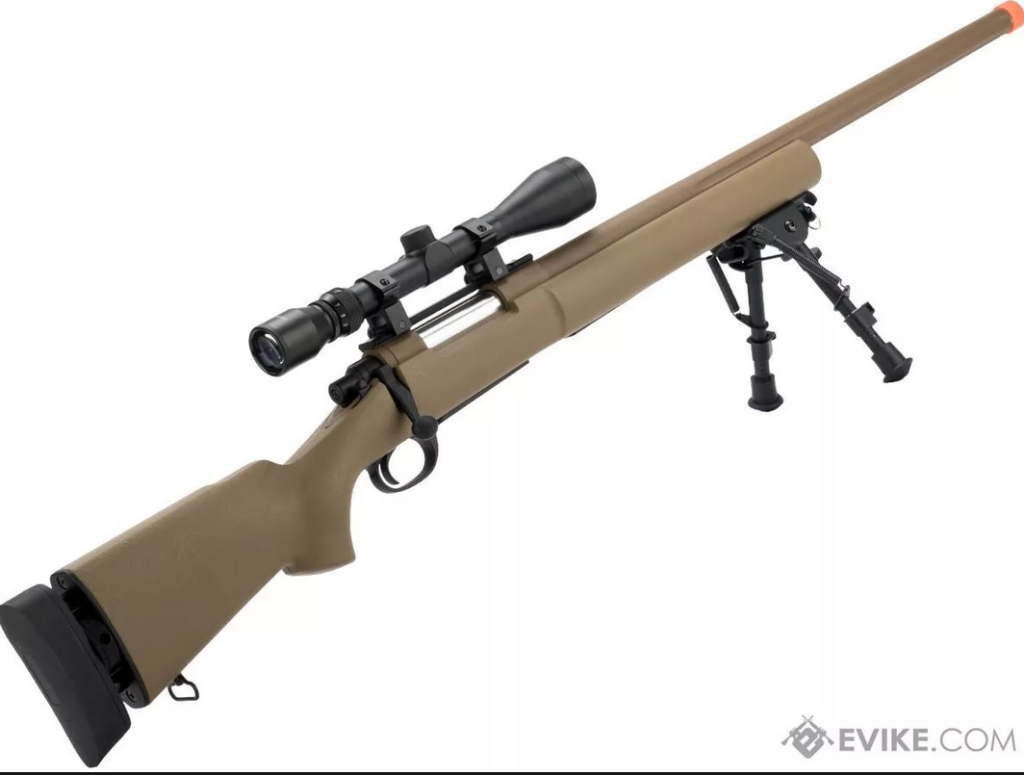
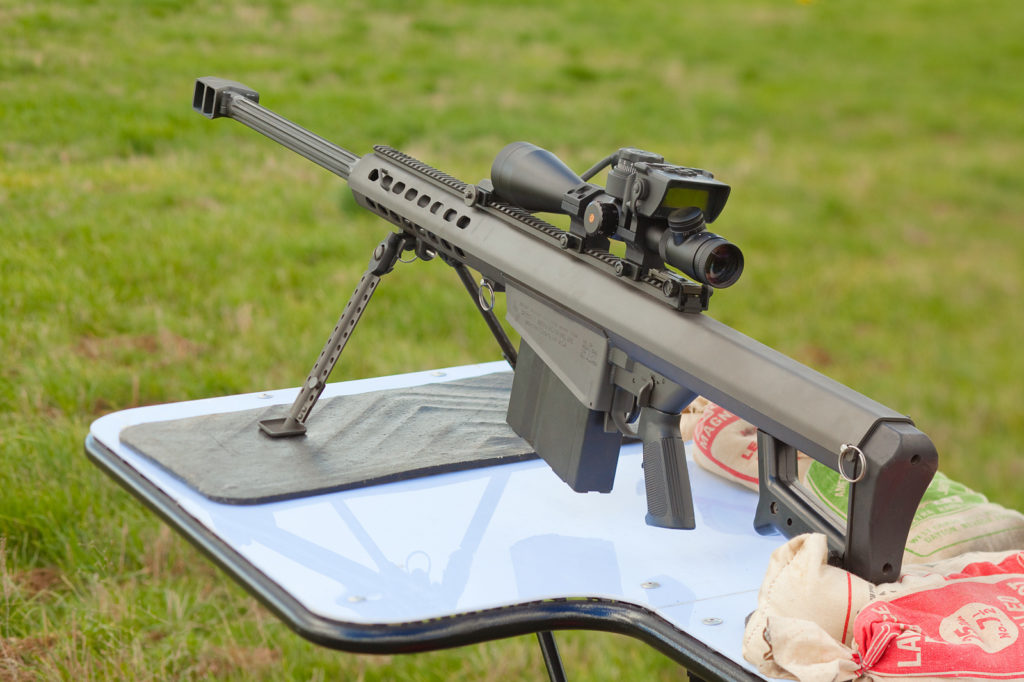

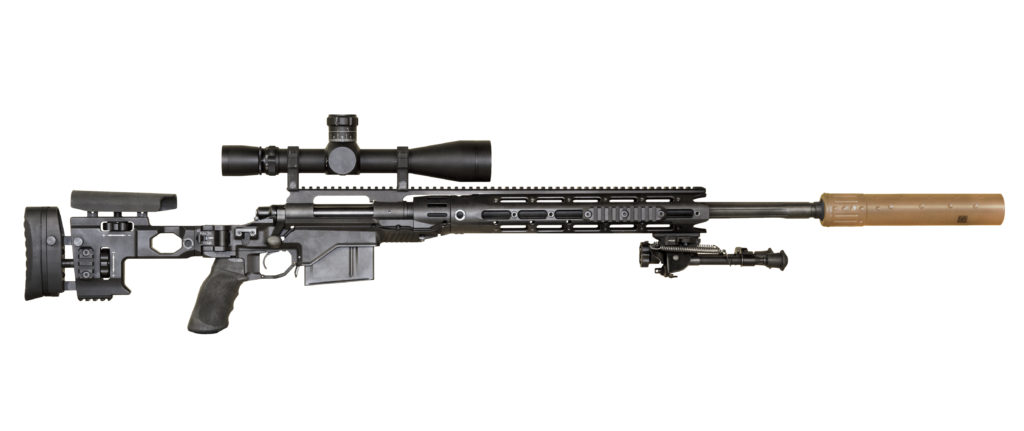




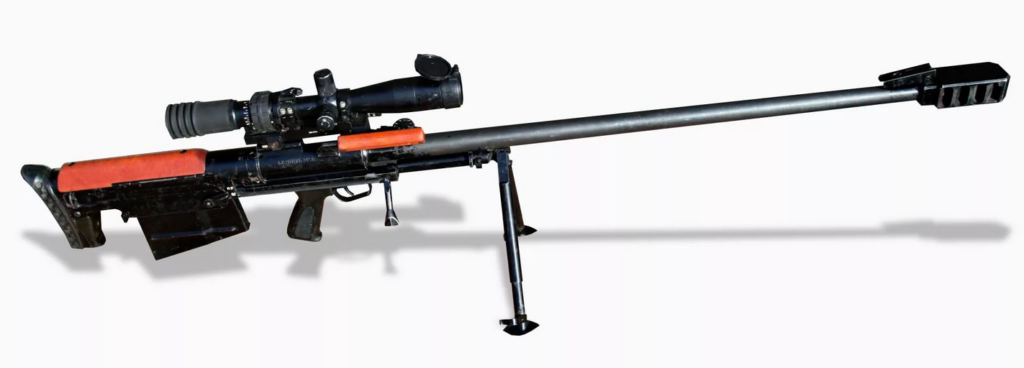
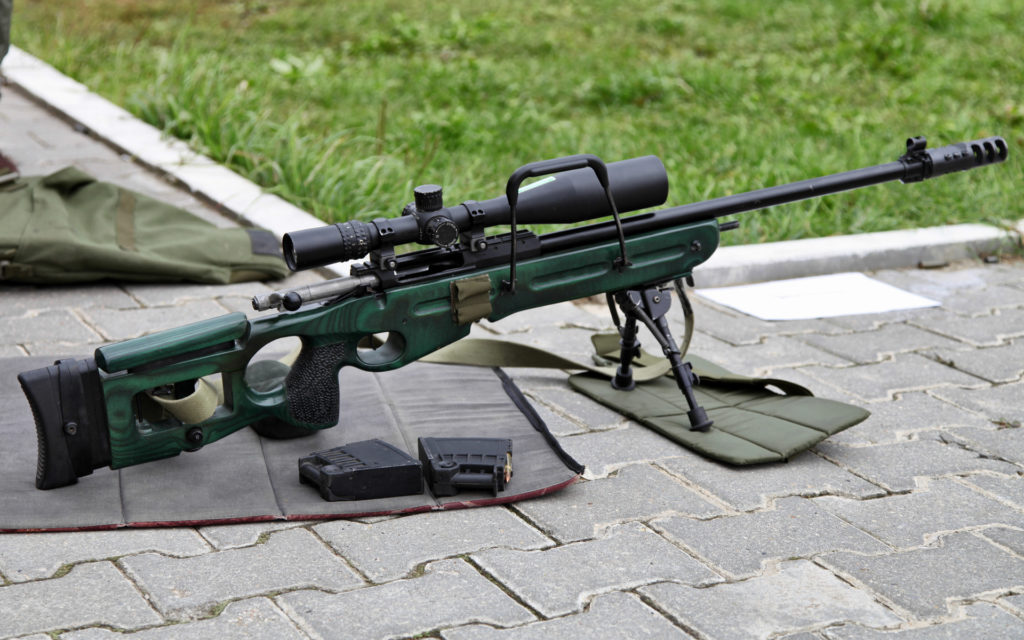
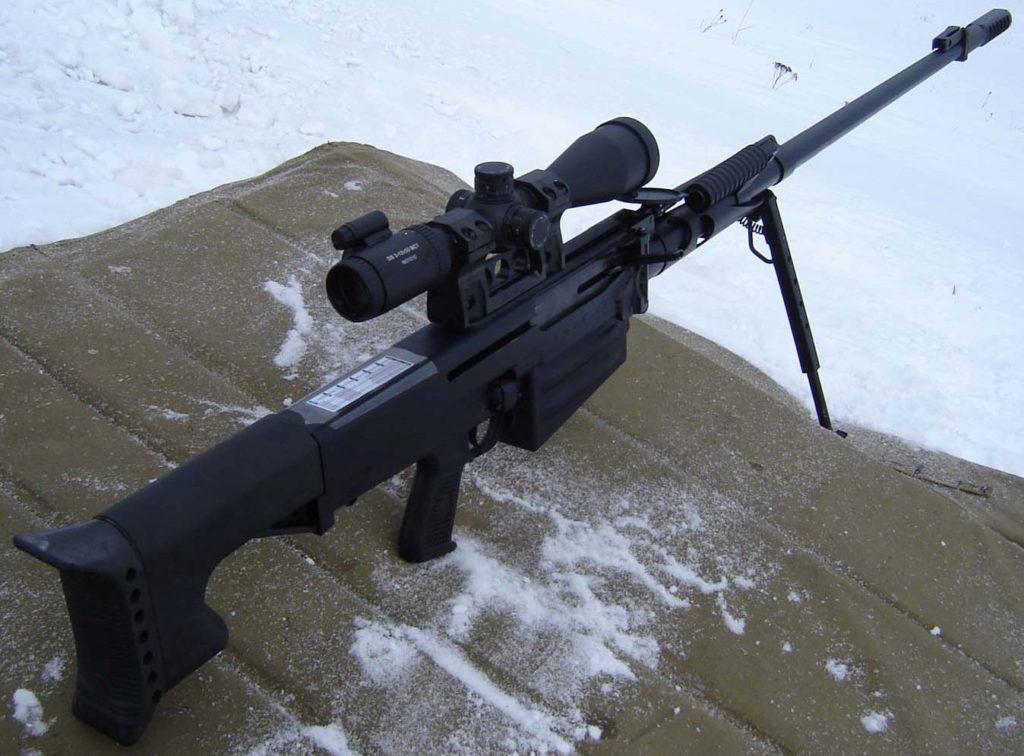
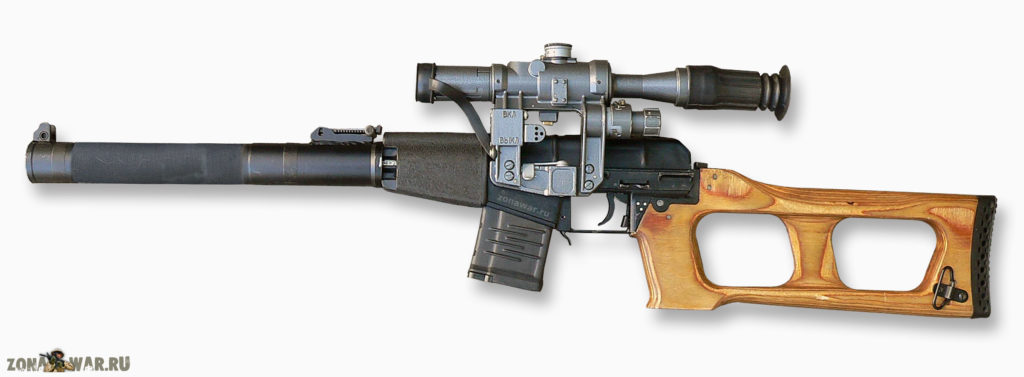
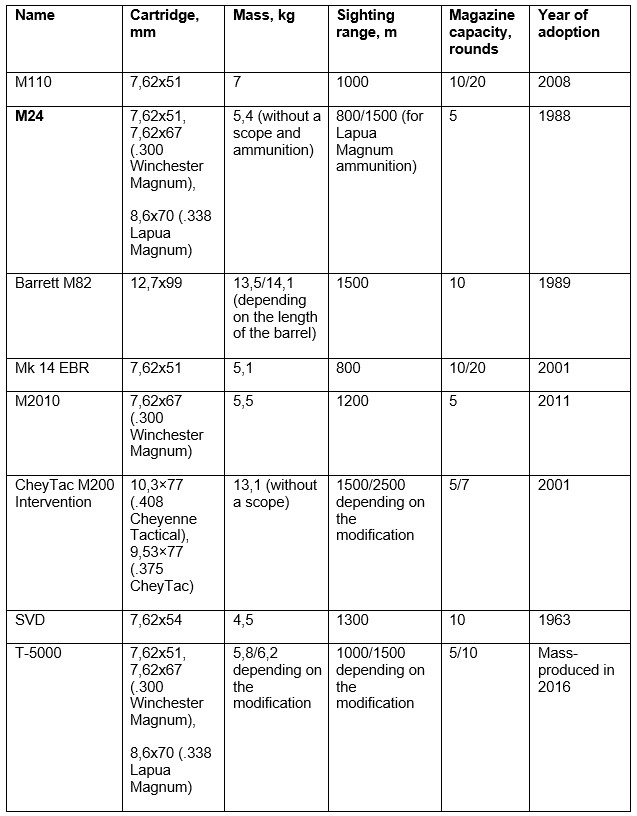




Awesome video !